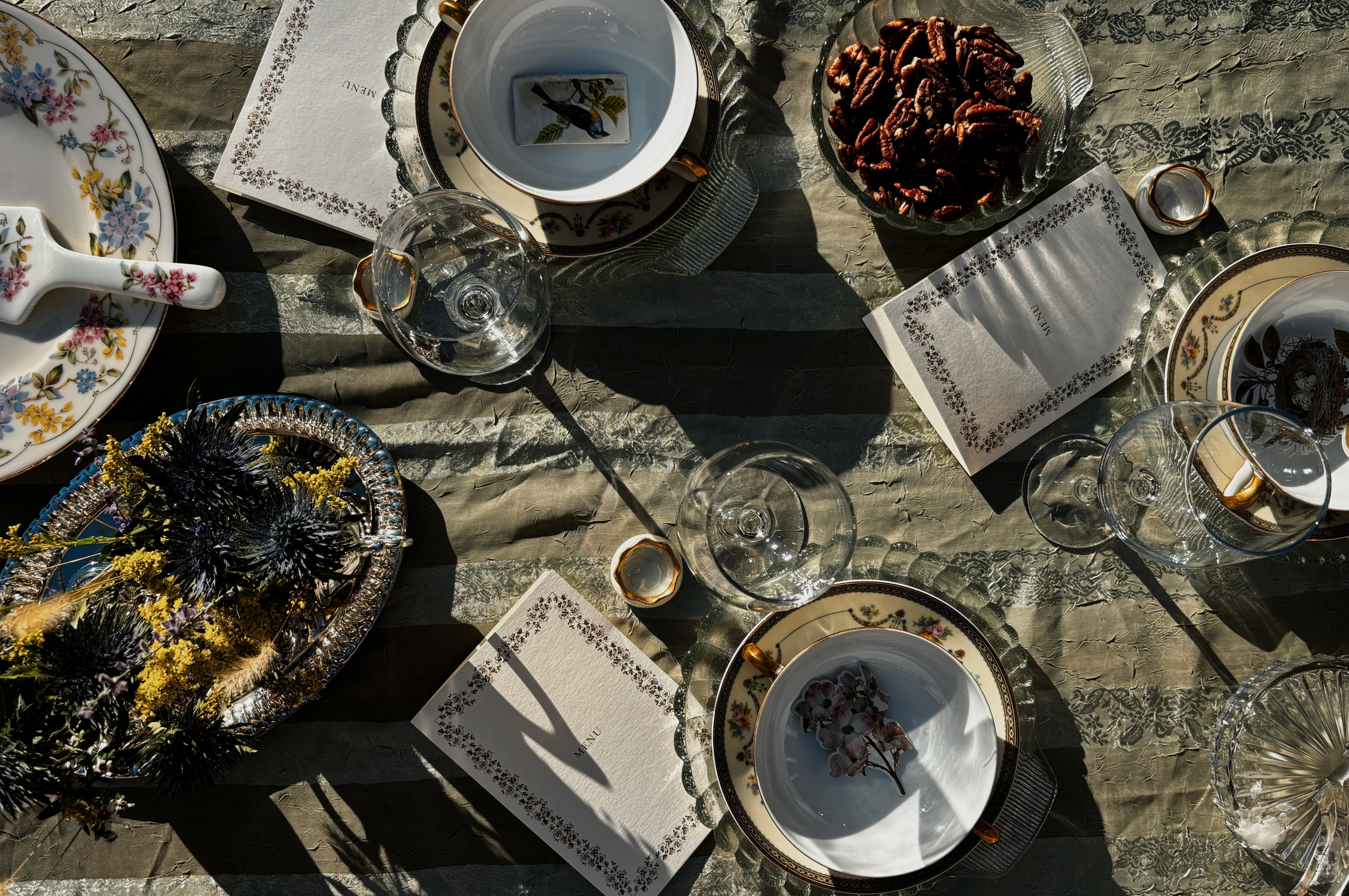I am a big podcast listener, and every once in a while there is a specific line that resonates in a different way.
“Luxury, true luxury is enjoying these items in your every day.”
I don’t know on which podcast it was. This line though, it stuck with me.
I grew up listening to my aunts and abuelas talking about a specific plate set that was not reserved for the everyday. It felt like they were too precious to use except on special occasions. The thing is, using objects that bring luxury into our everyday lives is a way of valuing ourselves. When we are reserving them for something (someone) better, we are essentially saying we are not enough.
I have since developed a small obsession with the objects we live with that bring value, design, and luxury to the simplest moments in our lives. My favorite one is my grandma’s 1950’s hand-painted Japanese coffee set, out of which I drink coffee regularly.

Design That Demands to Be Lived With

True design doesn’t sit behind glass. It asks to be touched, used, and worn into the fabric of daily rituals. The Eames Lounge Chair is not designed to be stared at, it is designed for sinking into with a book. The Alessi 9093 kettle, with its whimsical bird-shaped whistle, is at its best when heard in a quiet morning kitchen. A Sabre Paris butter knife, weighty in the hand, turns an ordinary slice of bread into something ceremonious.
Luxury in this sense is not about extravagance, it’s about the deliberate pairing of beauty and function, the joy that comes when an object’s form enhances the way it is used. It’s about the privilege of letting it bring importance to small moments in our every day.
Objects as Acts of Self-Worth
Designers like Dieter Rams believed that good design is long-lasting, useful, and honest. When we choose to use a Baccarat crystal pitcher for our date night dinner, or set a candle on the table in a hand-thrown ceramic holder, we are saying: my daily life is worthy of this.
There’s a quiet rebellion in this. We live in a world that often reserves beauty for display and keeps the practical separate from the pleasurable. Choosing to merge the two is a conscious act of valuing one’s own time and space.
And yes, using these objects comes with risk. A crystal glass can chip, a porcelain plate can crack, a lacquered wood tray can pick up a water ring that never fades.
But that vulnerability is part of the beauty.
Knowing they are ephemeral—that they won’t last forever—makes us hold them closer, use them more intentionally, and value the moments they are part of. Every scratch, every patina, every repaired handle is evidence of a life lived alongside them. Instead of diminishing their worth, these traces remind us that nothing perfect stays perfect, and that is precisely why we cherish them.
Designing Your Everyday
Incorporating luxury design into daily life doesn’t require a complete overhaul, just the thoughtful selection of pieces that bring joy in use. One beautiful writing instrument, one perfectly balanced teacup, one sculptural lamp that softens a room in the evening.

The goal is not to build a collection for the sake of ownership, but to curate a personal landscape of objects that quietly affirm:
you are worthy of beauty today, not someday.
When I lift my grandmother’s coffee cup each morning, I feel both her history and my own. The weight, the painted blossoms, the thin gold rim, it’s an act of remembrance and self-respect in one. These are not just things; they are our companions in living. Luxury, when folded into the everyday, stops being about status and starts being about presence. And that presence is, perhaps, the most precious thing of all.


Teilen:
Our favorite Mocktail: The Shakerato
London Coffee Guide